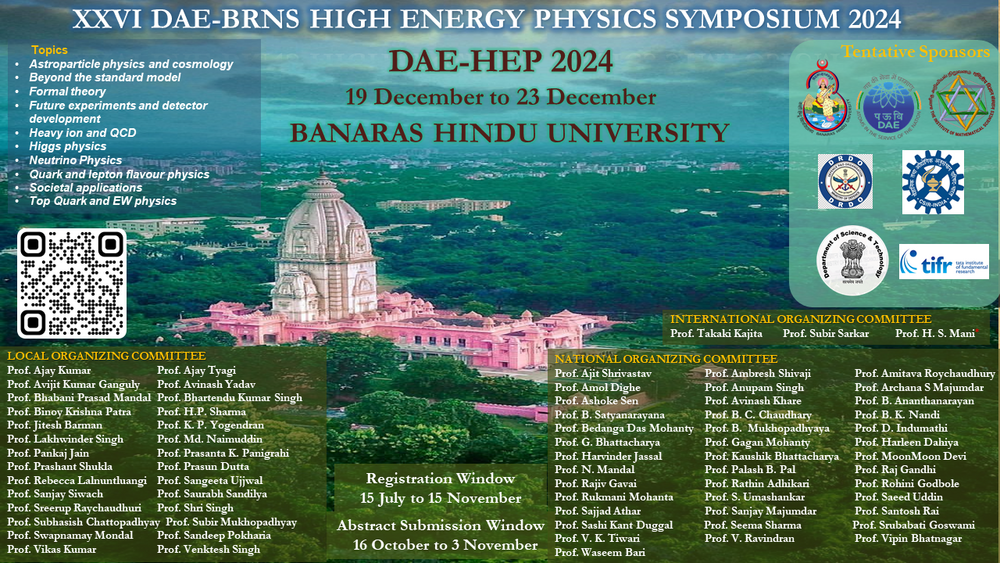Speaker
Description
We propose a Dirac mass model within the framework of Type-I seesaw, utilizing $A_4$ modular symmetry. Modular symmetry is crucial, as the Yukawa couplings are structured as modular forms, specifically in terms of the Dedekind eta function $\eta(\tau)$. This symmetry ensures that the Yukawa couplings transform similarly to the other matter fields, eliminating the need for extra flavon fields. The spontaneous breaking of the $A_4$ modular symmetry is driven by the vacuum expectation value (vev) of the complex modulus $\tau$. Our model yields predictions for neutrino oscillation parameters, including a preference for the normal mass hierarchy in the neutrino spectrum. Additionally, we demonstrate that the decay of the heavy Dirac fermions in the model can generate the observed baryon asymmetry of the Universe through Dirac leptogenesis.
| Field of contribution | Phenomenology |
|---|

